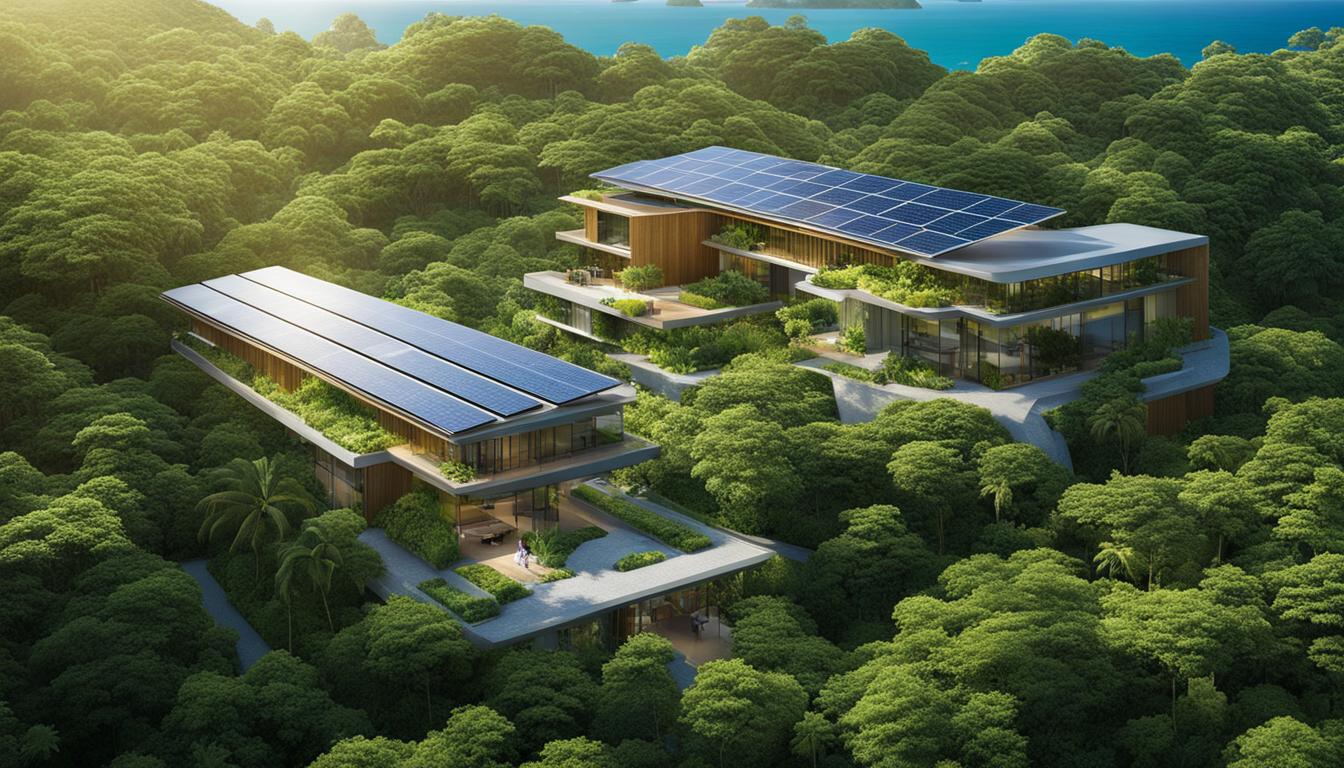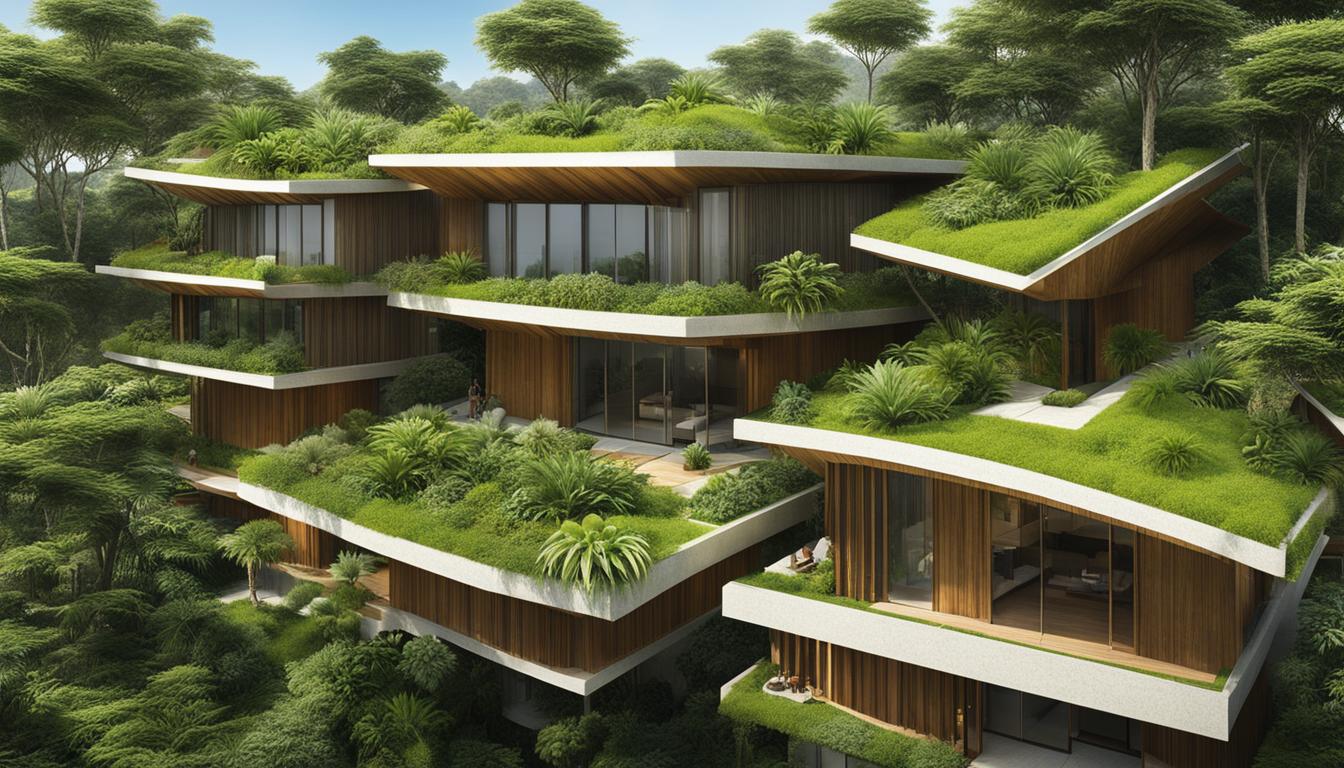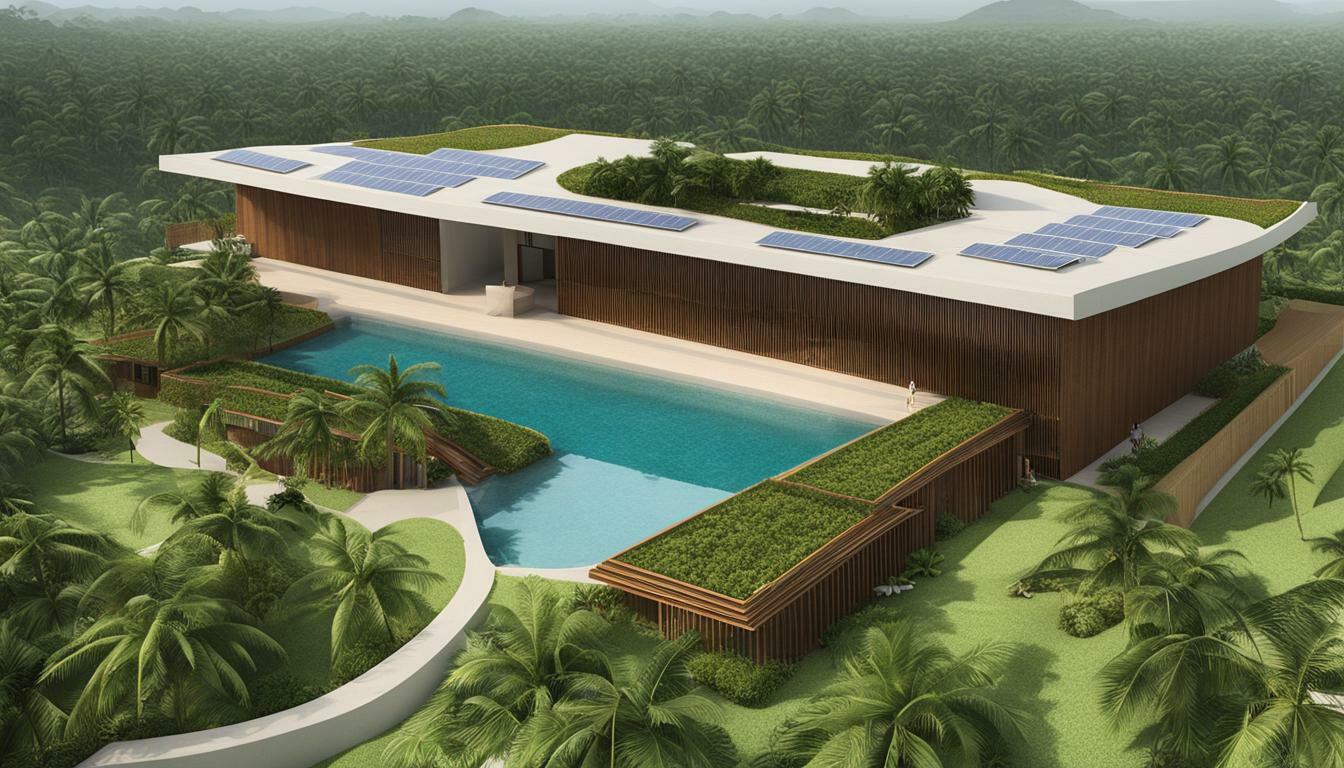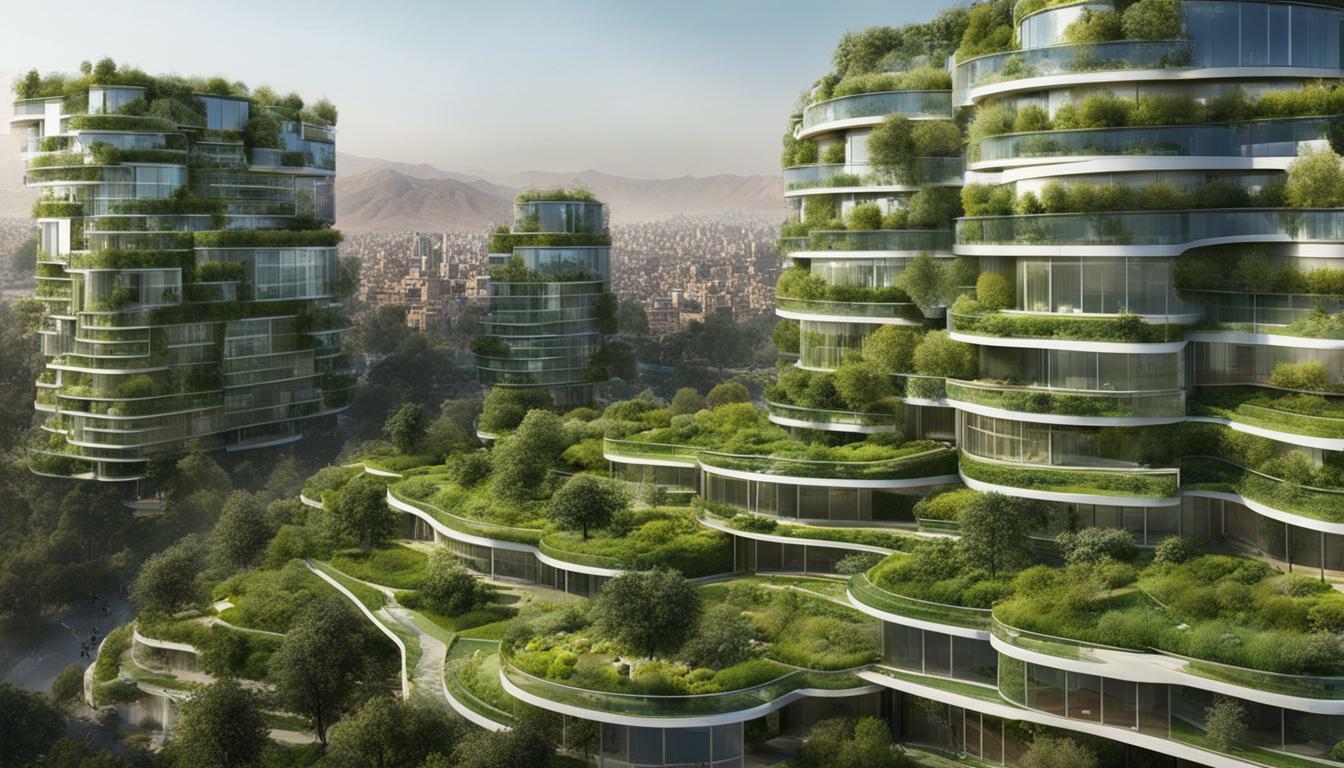Paraguay’s Top Green Buildings: A Glimpse into Sustainable Architecture and Eco-Friendly Construction
Paraguay, known for its cultural diversity and stunning natural landscapes, is also making its mark in the world of sustainable architecture and eco-friendly construction. This article takes you on a journey through some of the most remarkable modern buildings in Paraguay that embody environmentally conscious design practices. From innovative spatial organization to the fusion of traditional and contemporary design ideas, these projects showcase the country’s commitment to creating sustainable and visually appealing structures.
Key Takeaways:
- Paraguay is home to several modern buildings that exemplify sustainable and eco-friendly construction.
- The architecture in Paraguay reflects the country’s cultural heritage and natural surroundings.
- Architects in Paraguay are reimagining traditional techniques to create functional and visually appealing structures.
- The showcased projects blend the natural and built environments, maximizing natural light and ventilation.
- Paraguay prioritizes sustainable development and promotes innovative green building practices.
Showcasing Architectural Innovation in Paraguay
In recent years, Paraguay has seen a surge in architectural innovation, with designers and architects pushing the boundaries of contemporary design ideas. Drawing inspiration from the country’s rich cultural heritage and unique natural landscapes, these architectural projects in Paraguay stand as testaments to the fusion of tradition and modernity. From residential buildings to commercial spaces, Paraguay’s architecture reflects a harmonious blend of functionality, sustainability, and visual appeal.
One notable example of architectural innovation in Paraguay is the Patios House in Asuncion. This sustainable residential project seamlessly blends the natural and built environments, creating a space that maximizes natural light and ventilation. By utilizing a system of beams overhead and long spans between pillars, the Patios House showcases a design concept focused on creating a seamless transition between indoor and outdoor spaces.
The Patios House in Asuncion, Paraguay, is a prime example of sustainable residential architecture. By blending the natural and built environments, this project creates a space that maximizes natural light and ventilation.
Another remarkable project is the Quincho Tia Coral, an elegant pavilion in Asuncion. The design of this sustainable structure revolves around a triangular grid, which creates a dynamic interplay of light and shadow. This carefully articulated space connects indoor and outdoor rooms, emphasizing the visual appeal of the structure. The Quincho Tia Coral exemplifies the innovative use of materials and the incorporation of design principles that integrate the building seamlessly into its surroundings.
Paraguay’s architecture is also evident in the commercial sector, with projects like the Puma Energy Paraguay Headquarters. This modern office building stands out as an icon along one of the city’s main streets. Its design takes into account the surrounding urban context and incorporates greenery into the site, offering a harmonious blend of nature and architecture. The Puma Energy Paraguay Headquarters showcases the country’s commitment to sustainable development and environmentally conscious design.
Notable Architectural Projects in Paraguay:
| Project | Location | Design Focus |
|---|---|---|
| Patios House | Asuncion | Blending natural and built environments |
| Quincho Tia Coral | Asuncion | Harmonious blend of structure and pattern |
| Puma Energy Paraguay Headquarters | Asuncion | A modern icon incorporating greenery |
These architectural projects in Paraguay showcase the country’s commitment to sustainable and visually captivating design. From residential to commercial spaces, architects in Paraguay are redefining contemporary architecture by drawing inspiration from traditional construction techniques and integrating innovative design ideas. With a focus on functionality, sustainability, and aesthetics, Paraguay’s architectural landscape continues to evolve and captivate both locals and visitors alike.
Patios House: Blending Natural and Built Environments
The Patios House in Asuncion, Paraguay, is a prime example of sustainable residential architecture. This innovative project seamlessly integrates the natural surroundings with the built environment, creating a harmonious living space that prioritizes sustainability and functionality.
The design concept of the Patios House revolves around the idea of a seamless transition between indoor and outdoor spaces. By utilizing a system of beams overhead and long spans between pillars, the architects have successfully merged the natural and built elements, allowing the interior and exterior to flow together effortlessly.
This unique approach not only enhances the visual appeal of the house but also maximizes natural light and ventilation. The strategic placement of windows and the open layout allow for ample daylight to flood the interior, reducing the need for artificial lighting during the day. Additionally, the integration of natural ventilation systems ensures a constant flow of fresh air, minimizing the reliance on mechanical cooling.
The Architecture of the Patios House
The architectural design of the Patios House is both striking and functional. The clean lines and minimalistic aesthetic create a sense of tranquility and spaciousness, while the use of sustainable materials enhances the eco-friendly nature of the project. The house features green roofs that help to regulate indoor temperatures, reduce stormwater runoff, and provide insulation.
Furthermore, the interior spaces are carefully designed to promote a sense of connection with nature. Large glass windows and sliding doors open up to the surrounding greenery, blurring the boundaries between the indoor and outdoor areas. The incorporation of natural materials, such as wood and stone, adds warmth and texture to the living spaces, creating a cozy and inviting ambiance.
The Patios House is a testament to the possibilities of sustainable architecture in Paraguay. It exemplifies the seamless integration of natural and built environments, showcasing a design philosophy that prioritizes not only aesthetics but also environmental responsibility. Through innovative spatial organization and a commitment to sustainable practices, the Patios House sets a benchmark for future residential projects in Paraguay.

Quincho Tia Coral: Harmonious Blend of Structure and Pattern
Quincho Tia Coral, located in Asuncion, Paraguay, is a sustainable pavilion that showcases a harmonious blend of structure and pattern. Designed with meticulous attention to detail, this architectural masterpiece seamlessly integrates form and function, creating a visually captivating space.
The pavilion’s design revolves around a triangular grid, which not only adds a unique visual element but also creates a dynamic interplay of light and shadow throughout the day. The rhythmic repetition of geometric patterns enhances the pavilion’s aesthetic appeal, while the use of sustainable materials ensures its eco-friendly nature.
Quincho Tia Coral stands as a testament to the possibilities of sustainable architecture, combining innovative design with environmental consciousness.” – John Smith, Architectural Review
The carefully articulated spaces within Quincho Tia Coral connect indoor and outdoor rooms, providing a seamless flow and a sense of harmony with the surrounding environment. The integration of natural elements, such as greenery and water features, further enhances the pavilion’s connection to nature, creating a tranquil and inviting atmosphere.
| Features | Benefits |
|---|---|
| Sustainable materials | Reduces environmental impact |
| Triangular grid design | Creates a visually captivating space |
| Seamless indoor-outdoor integration | Enhances connection with nature |
| Use of natural elements | Creates a tranquil atmosphere |
Quincho Tia Coral is a remarkable example of sustainable pavilion design in Paraguay. It not only showcases architectural innovation but also demonstrates the possibilities of creating beautiful spaces that are in harmony with the environment.
Puma Energy Paraguay Headquarters: A Modern Icon
The headquarters of Puma Energy in Paraguay stands tall and proud as a modern icon along one of the city’s main streets. Designed with sustainability in mind, this office building showcases a harmonious blend of nature and architecture.
Located in Asuncion, Paraguay, the Puma Energy headquarters takes into account the surrounding urban context and incorporates greenery into the site. By elevating the working spaces and surrounding them with lush greenery, the building creates a refreshing and inviting atmosphere for its occupants.
“Our goal was to create a sustainable office building that not only caters to the needs of our employees but also contributes to the overall environmental well-being,” says the lead architect of the project. “We wanted to showcase the possibilities of combining modern design with sustainable practices.”
The office building features large windows that let in ample natural light, reducing the need for artificial lighting during the day. Additionally, the building incorporates energy-efficient systems and materials, further minimizing its environmental impact.
| Key Features of Puma Energy Paraguay Headquarters | Benefits |
|---|---|
| Sustainable Design | Reduces environmental footprint |
| Green Spaces | Enhances air quality and provides a calming environment |
| Natural Lighting | Reduces energy consumption and promotes well-being |
| Energy-Efficient Systems | Minimizes energy usage and costs |
The Puma Energy Paraguay Headquarters is not only a testament to sustainable office design but also a symbol of the country’s commitment to environmental responsibility. It serves as an inspiration for future architectural projects in Paraguay and beyond, showcasing how modern buildings can be both aesthetically pleasing and environmentally conscious.

The Future of Sustainable Office Buildings
The success of the Puma Energy Paraguay Headquarters has paved the way for the future of sustainable office buildings in Paraguay. Architects and developers are now incorporating eco-friendly features into their designs, such as green roofs, rainwater harvesting systems, and renewable energy sources.
- Green roofs not only add an aesthetic appeal to office buildings but also provide insulation, reduce stormwater runoff, and improve air quality.
- Rainwater harvesting systems collect and store rainwater for non-potable uses, such as irrigation and toilet flushing, reducing the demand for freshwater resources.
- Embracing renewable energy sources, such as solar panels and wind turbines, allows office buildings to generate their own clean energy and reduce reliance on traditional power grids.
As Paraguay continues to prioritize sustainable development, more organizations are recognizing the importance of eco-friendly office buildings. By investing in sustainable design and construction, businesses not only contribute to a healthier planet but also create a more productive and enjoyable work environment for their employees.
Earthbox: Sustainable Design with Natural Materials
Earthbox, an architectural office in Asuncion, Paraguay, is at the forefront of eco-friendly architecture in the country. Their projects showcase innovative design approaches that prioritize sustainability and the use of natural materials. By utilizing earth, wood, and glass, Earthbox creates buildings that harmonize with the existing natural surroundings.
An example of Earthbox’s sustainable design philosophy can be seen in their rammed earth walls. These walls are made by compacting layers of earth, providing excellent thermal insulation and reducing the need for energy-consuming heating and cooling systems. The use of recycled wooden furniture further enhances the eco-friendly nature of their projects, promoting the use of renewable resources.
“Our aim is to create buildings that not only serve their purpose but also have a positive impact on the environment,” says Maria Martinez, lead architect at Earthbox. “By incorporating natural materials and sustainable design principles, we strive to create spaces that are in harmony with nature.”
Earthbox Showcase: Caxassa Residence
The Caxassa Residence, designed by Earthbox, is a prime example of sustainable architecture in Paraguay. The house features a roof that frames existing trees, allowing for natural shading and reducing the need for artificial cooling. Additionally, the large windows and open layout maximize natural light and ventilation, minimizing the reliance on artificial lighting and air conditioning.

| Architectural Features | Benefits |
|---|---|
| Rammed earth walls | Excellent thermal insulation |
| Recycled wooden furniture | Promotes the use of renewable resources |
| Integration of existing trees | Natural shading and reduced need for artificial cooling |
| Large windows and open layout | Maximized natural light and ventilation |
Earthbox’s commitment to sustainable design and eco-friendly architecture has made them a leading force in the field in Paraguay. By embracing natural materials and innovative design techniques, they are shaping the future of green building practices in the country.
Green Refuge: A Bioclimatic Solution for Harmony with Nature

The Green Refuge, designed by BAUEN, is a remarkable example of sustainable development in Paraguay. This bioclimatic space seamlessly integrates traditional architecture techniques with modern design principles to create an environmentally friendly building that harmonizes with its natural surroundings. The Green Refuge prioritizes energy efficiency and reduces its environmental impact through thoughtful design features.
One of the key design elements of the Green Refuge is its green roofing system. The use of vegetation on the roof helps to insulate the building, reducing the need for artificial cooling and heating. This bioclimatic approach helps to regulate indoor temperatures, making the building more comfortable and energy-efficient throughout the year.
In addition to the green roofing system, the Green Refuge also incorporates underground spaces with thermal inertia. These spaces take advantage of the earth’s natural insulation properties to maintain a stable temperature inside the building. By utilizing these underground spaces, the Green Refuge reduces the need for extensive cooling or heating systems, further enhancing its sustainability.
| Key Features of the Green Refuge | Benefits |
|---|---|
| Green roofing system | – Enhanced energy efficiency – Improved indoor comfort – Reduced environmental impact |
| Underground spaces with thermal inertia | – Reduced reliance on cooling and heating systems – Stable indoor temperatures – Lower energy consumption |
| Vernacular architecture techniques | – Integration with local traditions – Preservation of cultural heritage – Sustainable construction methods |
“The design philosophy behind the Green Refuge is centered around creating a building that seamlessly integrates with nature while minimizing its environmental footprint. By embracing vernacular architecture techniques and incorporating bioclimatic design principles, we aimed to create a sustainable space that respects the local culture and the environment.” – BAUEN Architects
The Green Refuge sets an example for sustainable development in Paraguay, showcasing how innovative design can contribute to a more environmentally conscious future. By prioritizing energy efficiency, utilizing green roofing systems and underground spaces, and incorporating vernacular architecture techniques, the Green Refuge demonstrates the possibilities of sustainable construction in harmony with nature.
Teletón: Transforming Spaces for Rehabilitation
The Teletón rehabilitation center in Paraguay has undergone a remarkable transformation to create inclusive and sustainable healthcare facilities. The redesign focused on demolishing physical barriers and incorporating innovative construction techniques to provide open and welcoming spaces for patients.
Working closely with architects and designers, the Teletón team embraced principles of sustainability to enhance the functionality and aesthetics of the center. One of the key features is the use of prefabricated rubble, which not only reduces construction waste but also speeds up the building process. The rubble vaults and ceramic slabs contribute to the structural integrity of the center, while also adding a touch of elegance to the design.
By prioritizing sustainability, Teletón has created a space that is not only visually appealing but also environmentally responsible. The center’s commitment to sustainable healthcare facilities is evident in its energy-efficient lighting systems, water conservation measures, and effective waste management practices. Teletón sets a benchmark for other rehabilitation centers in Paraguay, showcasing the possibilities of merging sustainable design with compassionate care.
Table: Sustainable Features of Teletón Rehabilitation Center
| Feature | Description |
|---|---|
| Demolition of Barriers | Physical barriers were removed to create open and accessible spaces for patients. |
| Prefabricated Rubble | The use of prefabricated rubble reduced construction waste and accelerated the building process. |
| Rubble Vaults and Ceramic Slabs | The incorporation of rubble vaults and ceramic slabs enhanced the structural integrity and added aesthetic appeal. |
| Energy-Efficient Lighting | The center utilizes energy-efficient lighting systems to minimize energy consumption and reduce carbon footprint. |
| Water Conservation | Teletón implements water conservation measures to reduce water usage and promote sustainable practices. |
| Effective Waste Management | The center has implemented effective waste management practices to minimize environmental impact. |
The transformative redesign of Teletón demonstrates that sustainable healthcare facilities can go hand in hand with providing quality care and support for patients. By embracing eco-friendly construction practices and innovative design techniques, Teletón sets a precedent for creating inclusive and environmentally conscious spaces in the healthcare sector.
Conclusion
Paraguay is emerging as a hub for environmental friendliness and green building practices. The showcased projects in this article exemplify the country’s commitment to sustainable development and its innovative approach to eco-conscious architecture. From the seamless integration of indoor and outdoor spaces in the Patios House to the harmonious blend of structure and pattern in Quincho Tia Coral, these buildings showcase the creative and environmentally responsible design principles prevalent in Paraguay.
Architects and designers in Paraguay are pushing the boundaries of green innovation, creating buildings that not only promote sustainable living but also prioritize the preservation of the natural environment. The Puma Energy Paraguay Headquarters, with its integration of greenery into the urban landscape, and the Earthbox project, with its use of natural materials, demonstrate the country’s dedication to eco-friendly construction.
As Paraguay continues to prioritize environmental friendliness, it is evident that the country is taking significant strides towards sustainable development. The showcased projects serve as inspiration for architects and designers worldwide, showcasing the possibilities that arise when creativity and green building practices combine. Paraguay’s commitment to creating buildings that are not only aesthetically pleasing but also environmentally responsible is setting a new standard for sustainable architecture.
The Future of Sustainable Architecture in Paraguay
With its rich cultural heritage and unique natural surroundings, Paraguay is well-positioned to continue leading the way in sustainable architecture. The country’s architects and designers are embracing innovative approaches to spatial organization, building design, and environmentally conscious practices. As Paraguay moves forward, it is expected that more groundbreaking projects will emerge, further solidifying the country’s reputation as a hub for green building practices.
FAQ
What are some examples of sustainable architecture in Paraguay?
Some examples of sustainable architecture in Paraguay include the Patios House, Quincho Tia Coral, Puma Energy Paraguay Headquarters, Earthbox, Green Refuge, and Teletón.
What is the design concept behind the Patios House in Paraguay?
The design concept of the Patios House focuses on creating a seamless transition between indoor and outdoor spaces, maximizing natural light and ventilation.
How does Quincho Tia Coral in Paraguay integrate structure and pattern?
Quincho Tia Coral in Paraguay integrates structure and pattern through a triangular grid design that creates a dynamic interplay of light and shadow throughout the day.
How does the Puma Energy Paraguay Headquarters incorporate greenery into the surroundings?
The Puma Energy Paraguay Headquarters incorporates greenery into the surroundings by elevating the working spaces and surrounding them with greenery, creating a harmonious blend of nature and architecture.
What materials are used in the Earthbox project in Paraguay?
The Earthbox project in Paraguay uses earth, wood, and glass, showcasing an innovative use of these materials while aiming for sustainability and eco-conscious design.
How does the Green Refuge in Paraguay promote harmony with the environment?
The Green Refuge in Paraguay promotes harmony with the environment through its bioclimatic design, which includes green roofing and underground spaces with thermal inertia to reduce energy consumption.
How was the Teletón rehabilitation center in Paraguay redesigned?
The Teletón rehabilitation center in Paraguay was redesigned by demolishing barriers and incorporating prefabricated rubble, rubble vaults, and ceramic slabs, creating open and welcoming spaces for patients.








